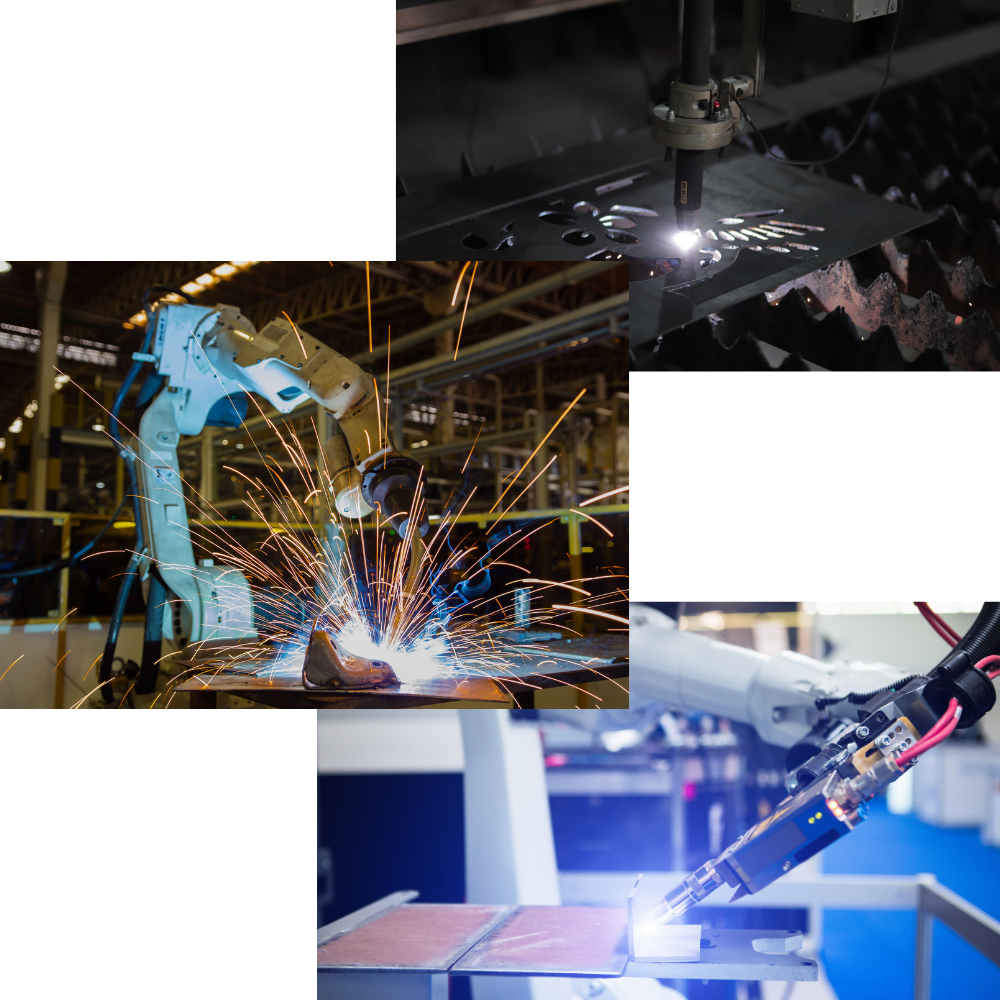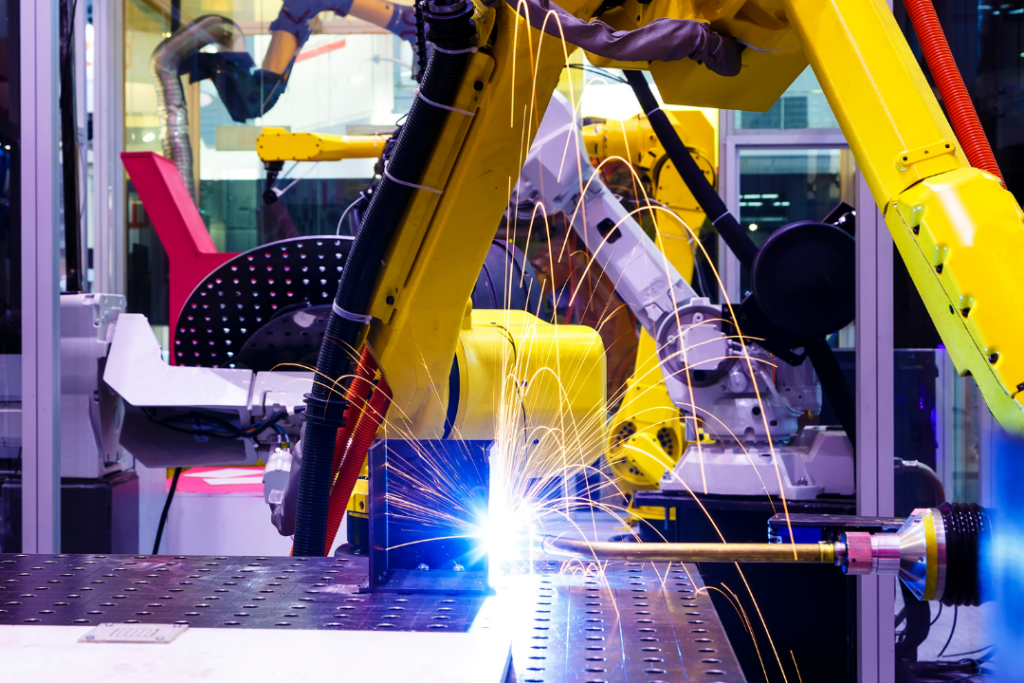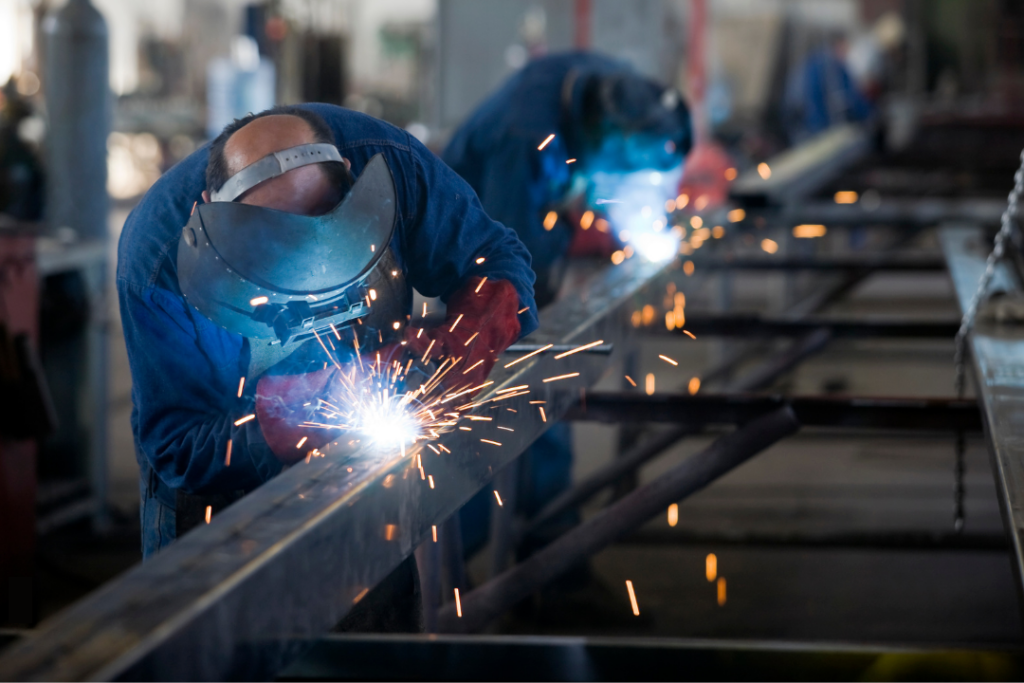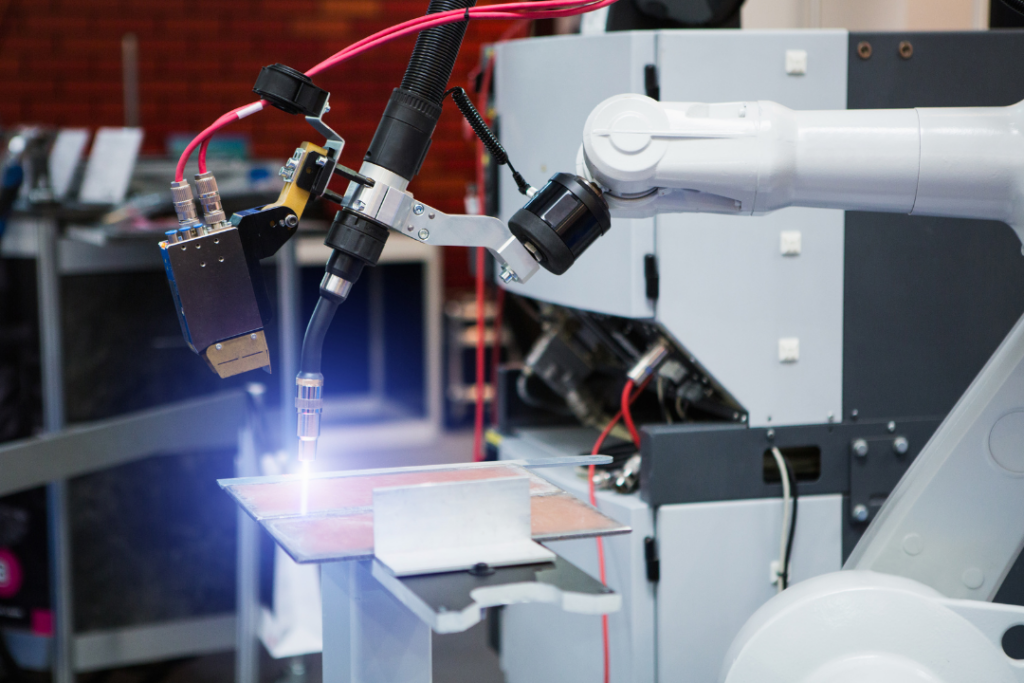WELDING
CERTIFIED
QUALITY
EFFICIENCY

ROBOTIC WELDING PROCESS
Welding automation reduces manufacturing time, labor costs, and accident risks, while ensuring consistent quality and high productivity.
Robotic welding meets the needs of both large and small businesses, offering a cost-effective solution for various volumes, while efficiently complementing manual welding.
At SybotX, our engineers study and develop solutions tailored to your needs, ensuring optimal automation of your welding processes.
PRINCIPLES OF ROBOTIC WELDING SYSTEMS
CONSISTENCY AND FLEXIBILITY
Robotic arms ensure consistent quality, reducing variations and providing superior finishes.
With their reprogrammable capabilities, welding robots allow you to quickly adapt production for different part formats and geometries based on customer requirements.
Automation can be justified even for small batches, as it depends on the annual workload and production frequency.


SKILLS AND EMPLOYMENT
Manual welding incurs high costs due to training requirements and safety measures needed to protect operators from heat and fumes.
Automation does not eliminate jobs, but redefines everyone’s roles.
Your employees will work in better conditions, away from demanding and hazardous environments, while having the opportunity to focus on higher-value tasks.
WELDING AND CONTROL PROCESS
Welding stations dedicated to robotics monitor and adjust key parameters such as temperature, weld depth, and other supplementary factors.
This ensures consistent quality and complete traceability, essential in many demanding industries.
With the tightening of safety regulations and the shortage of skilled labor, companies are increasingly turning to these intelligent and collaborative robotic welding solutions.

DIFFERENT TYPES OF ROBOTIC WELDING
ARC WELDING
Arc welding robots are commonly used devices that create an electrical arc between an electrode and a metal workpiece, allowing for the fusion and assembly of materials through the high temperatures generated.
The arc welding robot can perform this welding task in various ways: TIG, MIG, or MAG.
PLASMA WELDING
Plasma welding is a process that uses an ionized gas, called plasma, to generate extremely high temperatures, reaching up to 25 000°C.
It is characterized by its high energy density and the fast speed of the protective gas, offering increased productivity and greater penetration compared to arc welding.
SPOT WELDING
Spot welding is an assembly process that causes localized heating through the Joule effect, allowing for the fusion and assembly of materials.
This type of welding is suitable for thin parts, such as body components in the automotive, railway industries…
LASER WELDING
Laser welding is perfectly suited for parts requiring high assembly precision, offering a clean aesthetic and highly localized intervention.
This technique allows for high-quality welds while minimizing the heat-affected zone.
ROBOTS DEDICATED TO WELDING
There are several robot brands, with the most well-known being FANUC, ABB, YASKAWA, STAUBLI, KUKA, KAWASAKI…
SybotX, your engineering office specializing in spraying and deposition, collaborates and works with many brands.





